
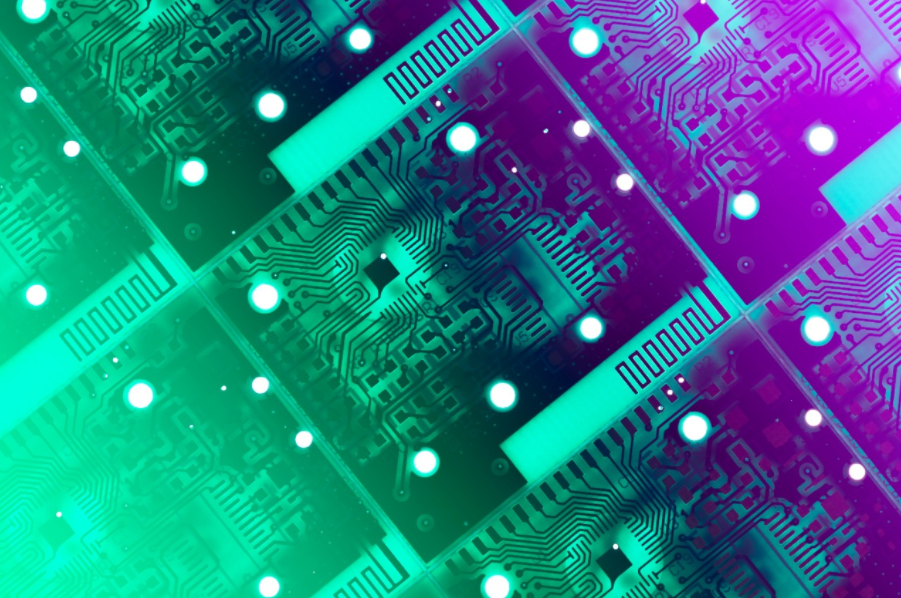
It’s Been a Dell EMC VxRail Filled Summer
Wed, 03 Aug 2022 21:32:14 -0000
|Read Time: 0 minutes
Get your VxRail learn on with Tech Field Days and ESG
It has been a busy summer with the launch of our Next Gen VxRail nodes built on 15th Generation PowerEdge servers. This has included working with the fantastic people at ESG and Tech Field Day. Working with these top tier luminaries really forces us to distill our messaging to the key points – no small feat, particularly with so many new releases and enhancements.
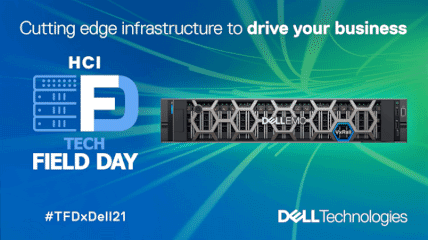 If you are not familiar with Tech Field Days, they are “a series of invite-only technical meetings between delegates invited from around the world and sponsoring enterprise IT companies that share their products and ideas through presentations, demos, roundtables, and more”. The delegates are all hand-picked industry thought leaders – those wicked smart people you are following on Twitter – and they ask tough questions. Earlier this month, Dell Technologies spent two days with them: a day dedicated to storage, and a day for VxRail. You can catch the recordings from both days here: Dell Technologies HCI & Storage: Cutting Edge Infrastructure to Drive Your Business.
If you are not familiar with Tech Field Days, they are “a series of invite-only technical meetings between delegates invited from around the world and sponsoring enterprise IT companies that share their products and ideas through presentations, demos, roundtables, and more”. The delegates are all hand-picked industry thought leaders – those wicked smart people you are following on Twitter – and they ask tough questions. Earlier this month, Dell Technologies spent two days with them: a day dedicated to storage, and a day for VxRail. You can catch the recordings from both days here: Dell Technologies HCI & Storage: Cutting Edge Infrastructure to Drive Your Business.
Of the twelve great jampacked VxRail sessions, if you cannot watch them all, do make time in your day for these three:
- VxRail dynamic nodes – Flexibility for the Future. In short, VxRail without vSAN. Leverage HCI Mesh, or FC SAN storage like PowerStore T or PowerMax, and bring that VxRail LCM goodness to other vSphere clusters in your data center.
- What Does “Seamless Technology Integration” Mean for VxRail? I hate tooting my own horn, but if you want a quick deep dive on where all the storage performance in VxRail is coming from, this is your 22-minute Cliff Notes version.
- Get the Most Out of Your K8s with Tanzu on VxRail This is your crash course about how VxRail can get Tanzu stood up, so you can get Kubernetes at the Speed of Cloud, within your data center.
One more suggestion, if you are new to VxRail, or on the fence about deploying VxRail, tune into this session from Adam Little, Senior Cybersecurity Administrator for New Belgium Brewing, and the reasons they selected VxRail. Even brewing needs high availability, redundancy, and simplicity.
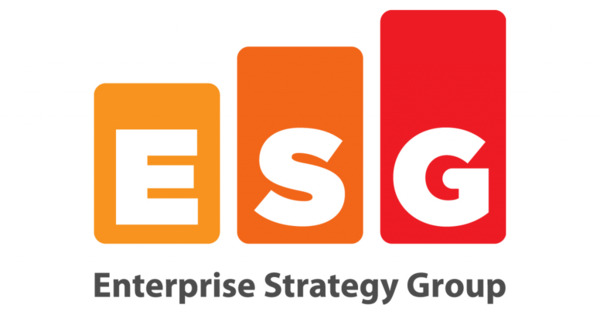 ESG is an IT analyst, research, validation, and strategy firm whose staff is well known for their technical prowess and frankly are fun to work with. Maybe that is because they are techies at heart who love geeking out over new hardware. I got to work with Tony Palmer as he audited the results of our VxRail on 15th Generation PowerEdge performance testing. Tony went through things with a fine-tooth comb, and asked a lot of great (and tough) probing questions.
ESG is an IT analyst, research, validation, and strategy firm whose staff is well known for their technical prowess and frankly are fun to work with. Maybe that is because they are techies at heart who love geeking out over new hardware. I got to work with Tony Palmer as he audited the results of our VxRail on 15th Generation PowerEdge performance testing. Tony went through things with a fine-tooth comb, and asked a lot of great (and tough) probing questions.
What was most interesting was how he looked at the same data but in a very different way – quickly zeroing in on how much performance VxRail could deliver at sub-millisecond latency, verses peak performance. Tony pointed out “It’s important to note that not too long ago, performance this high with sub-millisecond response times required a significant investment in specialized storage hardware”. Personally, I love this independent validation. It is one thing for our performance team to benchmark VxRail performance, but it is quite another for an analyst firm to audit our results and to be blown out of the water to the degree they were. Read their full Technical Validation of Dell EMC VxRail on 15th Generation PowerEdge Technology: Pushing the Boundaries of Performance and VM Density for Business- and Mission-critical Workloads], and then follow it up with some of their previous work on VxRail.
If performance concerns have been holding you back from putting your toes in the HCI waters, now is a great time to jump in. The 3rd Gen Intel® Xeon® Scalable processors are faster and have more cores, but also bring other hardware architectural changes. From a storage performance perspective, the most impactful of those is PCIe Gen4, with double the bandwidth of PCIe Gen 3 which was introduced in 2012.
From the OLTP16K (70/30) workload in the following figure, we can see that by just upgrading the vSAN cache drive to PCIe Gen 4, an additional 37% of performance can be unleashed. If that is not enough, enabling RDMA for vSAN nets an additional 21% of performance. One more thing, this is with only two diskgroups… check in with me later for when we crank performance up to 11 with four diskgroups, faster cache drives, and a few more changes.
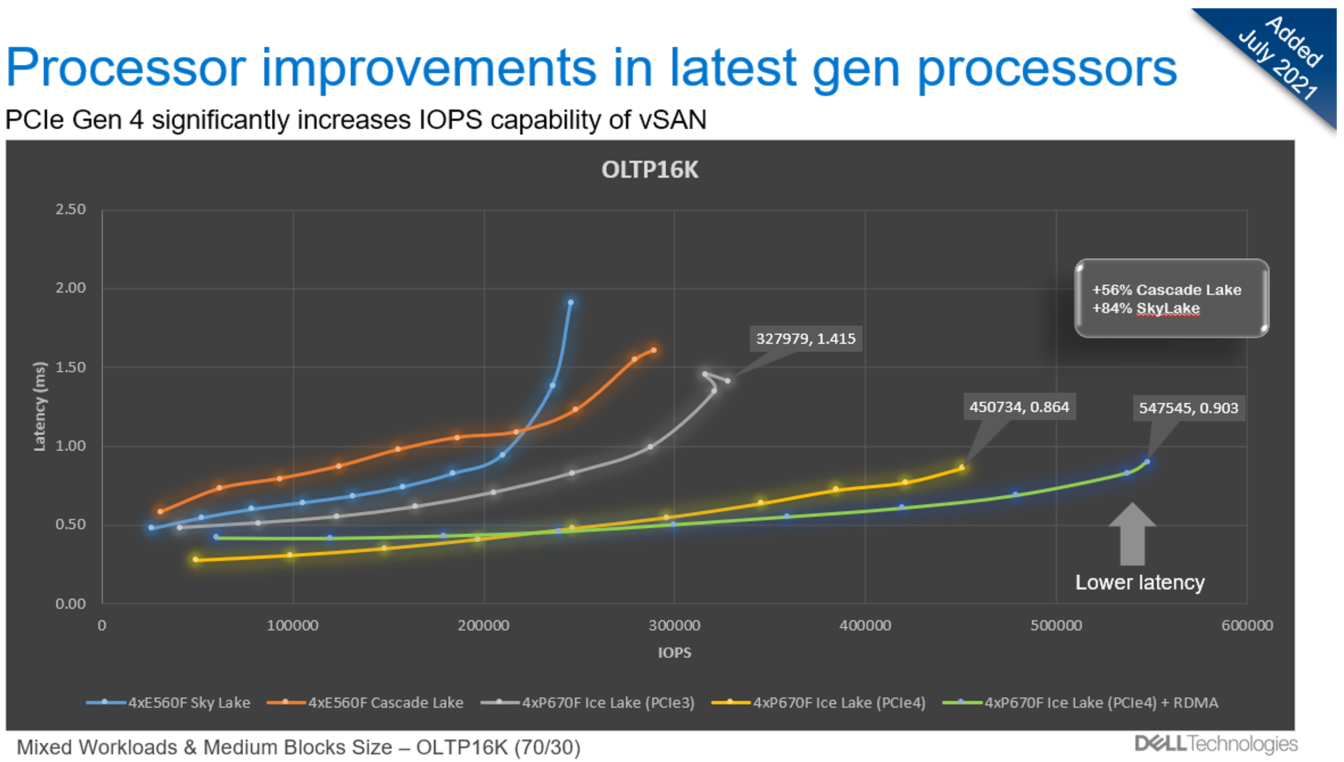
With OLTP4K (70/30) peak IOPS performance clocking in at 155K with 0.853ms latency per node, VxRail can support workloads that demand the most of storage performance. But performance is not always the focus of storage.
If your workloads benefit from SAN data services such as PowerStore’s 4:1 Data Reduction or PowerMax’s SRDF, then now is a great time to learn about the VxRail Advantage and the benefits that VxRail Lifecycle Management provides. Check out Daniel Chiu’s blog post on VxRail dynamic nodes, where the power of the portfolio is delivering the best of both worlds.
Author: David Glynn, Twitter (@d_glynn), LinkedIn
Related Blog Posts

New VxRail Node Lets You Start Small with Greater Flexibility in Scaling and Additional Resiliency
Mon, 29 Aug 2022 19:00:25 -0000
|Read Time: 0 minutes
When deploying infrastructure, it is important to know two things: current resource needs and that those resource needs will grow. What we don’t always know is in what way the demands for resources will grow. Resource growth is rarely equal across all resources. Storage demands will grow more rapidly than compute, or vice-versa. At the end of the day, we can only make an educated guess, and time will tell if we guessed right. We can, however, make intelligent choices that increase the flexibility of our growth options and give us the ability to scale resources independently. Enter the single processor Dell VxRail P670F.
The availability of the P670F with only a single processor provides more growth flexibility for our customers who have smaller clusters. By choosing a less compute dense single processor node, the same compute workload will require more nodes. There are two benefits to this:
- More efficient storage: More nodes in the cluster opens the door to using the more capacity efficient erasure coding vSAN storage option. Erasure coding, also known as parity RAID, (such as RAID 5 and RAID 6) has a capacity overhead of 33% compared to the 100% overhead that mirroring requires. Erasure coding can deliver 50% more usable storage capacity while using the same amount of raw capacity. While this increase in storage does come with a write performance penalty, VxRail with vSAN has shown that the gap between erasure coding and mirroring has narrowed significantly, and provides significant storage performance capabilities.
- Reduced cluster overhead: Clusters are designed around N+1, where ‘N’ represents sufficient resources to run the preferred workload, and ‘+1’ are spare and unused resources held in reserve should a failure occur in the nodes that make up the N. As the number of nodes in N increases, the percentage of overall resources that are kept in reserve to provide the +1 for planned and unplanned downtime drops.
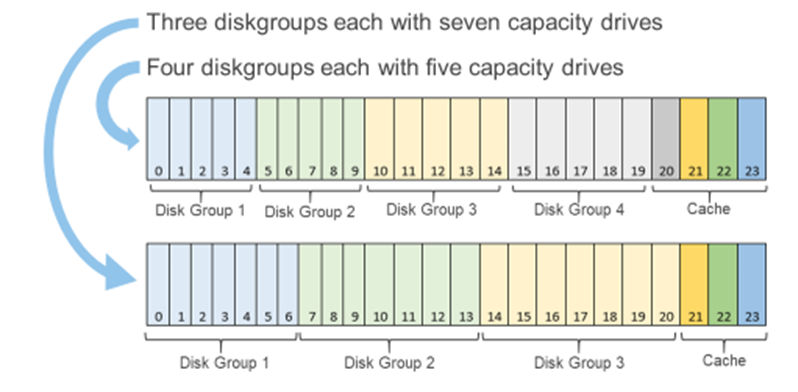
Figure 1: Single processor P670F disk group options
You may be wondering, “How does all of this deliver flexibility in the options for scaling?”
You can scale out the cluster by adding a node. Adding a node is the standard option and can be the right choice if you want to increase both compute and storage resources. However, if you want to grow storage, adding capacity drives will deliver that additional storage capacity. The single processor P670F has disk slots for up to 21 capacity drives with three cache drives, which can be populated one at a time, providing over 160TB of raw storage. (This is also a good time to review virtual machine storage policies: does that application really need mirrored storage?) The single processor P670F does not have a single socket motherboard. Instead, it has the same dual socket motherboard as the existing P670F—very much a platform designed for expanding CPU and memory in the future.
If you are starting small, even really small, as in a 2-node cluster (don’t worry, you can still scale out to 64 nodes), the single processor P670F has even more additional features that may be of interest to you. Our customers frequently deploy 2-node clusters outside of their core data center at the edge or at remote locations that can be difficult to access. In these situations, the additional data resiliency that provided by Nested Fault Domains in vSAN is attractive. To provide this additional resiliency on 2-node clusters requires at least three disk groups in each node, for which the single processor P670F is perfectly suited. For more information, see VMware’s Teodora Hristov blog post about Nested fault domain for 2 Node cluster deployments. She also posts related information and blog posts on Twitter.
It is impressive how a single change in configuration options can add so much more configuration flexibility, enabling you to optimize your VxRail nodes specifically to your use cases and needs. These configuration options impact your systems today and as you scale into the future.
Author Information
Author: David Glynn, Sr. Principal Engineer, VxRail Technical Marketing
Twitter: @d_glynn

Our fastest and biggest launch ever! - We’ve also made it simpler
Tue, 13 Jul 2021 19:23:47 -0000
|Read Time: 0 minutes
With this hardware launch, we at VxRail are refreshing our mainline platforms. Our “everything” E Series, our performance-focused P Series, and our virtualization-accelerated V Series. You’ve probably already guessed that these nodes are faster and bigger. This is always the case with new hardware in the tech industry, thanks to Moore’s Law of "Cramming more components onto integrated circuits,” but we’ve also made this hardware release simpler. Let’s dig into these changes, what they mean to you, the consumer, and what choices you may need to consider.
Faster. Bigger.
The headline in this could well be the 3rd Generation Intel Xeon Scalable processor (code named Ice Lake) with its increased cores and performance. After all, the CPU is the heart of every computing device from the nebulous public cloud to the smart refrigerator in your kitchen. But there is more to CPUs and servers than cores and clock speeds. The most significant of these, in my opinion, are support for the fourth generation of the PCIe bus. PCIe Gen 3 was introduced on 12th Generation PowerEdge servers in 2012, so the arrival of PCIe Gen 4 with double the bandwidth and 33% more lanes is very much appreciated. The PCIe bus is the highway network that connects everything together, this increase in bandwidth and lanes drives change and enables improvements in many other components.
The most significant impact for VxRail is the performance that it unlocks with PCIe Gen 4 NVMe drives, available on all the new nodes including the V Series. With vSAN’s distributed architecture, all writes go to multiple cache drives on multiple nodes. Anything that improves cache performance, be it high bandwidth, lower latency networking, or faster cache drives, will drive overall application performance and increased densities. For the relatively small price premium of NVMe cache drives over SAS caches drives, VxRail can deliver up to 35% higher IOPS and up to 14% lower latency (OLTP 32K on RAID 1). NVMe cache drives also reduce the performance impact of enabling data service like deduplicate, compression, and encryption at rest. For more information, check out this paper from our performance team last year (did you know that VxRail has its own performance testing team?) where they showed the performance impact of dedupe and compression compared to compression only compared to no data reduction. This data highlights the small performance impact that compression only has on performance and the benefit of NVMe for cache drives.
Staying with storage, the new SAS HBA has double the number of lanes, which doubles the bandwidth available to drives. Don’t assume that this means twice the storage performance – wait for my next post where I’ll delve into those details with ESG. It is a topic worthy of its own post and well worth the wait, I promise! The SAS HBA has been moved to the front of the node right behind the drive bay, this is noteworthy because it frees up a PCIe slot on some configurations. We also freed up a PCIe slot on all configurations with the new Boot Optimized Storage Solution (BOSS) device – more on the new BOSS device below. These changes: deliver a third PCIe slot on the E Series, flexibility on the V Series with support for six GPUs while still offering PCIe slots for networking and FC expansion. Some would argue you can never have enough PCIe slots, but we argued, and sacrificed these gains on the P Series in favor of delivering four additional capacity drive slots, providing 184 TB of raw storage capacity in 2U. Don’t worry, there are still plenty of PCIe slots for additional networking or fibre channel cards – yes, in case you missed it, you can add fibre channel storage to your favorite HCI platform, extending the storage offerings for your various workloads, through the addition of QLogic or Emulex 16/32GB fibre channel cards. These are also PCIe Gen 4 to drive maximum performance.
PCIe Gen 4 is also enabling network cards to drive more throughput. With this new generation of VxRail, we are launching with an onboard quad port 25 GbE networking card, 2.5 times more than what the previous generation launched with. See the Get thee to 25GbE section in my recent post for A trilogy of reasons to see why you need to be looking at 25 GbE NICs today, even if you are not upgrading your network switches just yet. With this release, VxRail is shifting our onboard networking to use the Open Compute Project (OCP) spec 3.0 form factor. For you, the customer, this means greater choice in on-board network cards, with 10 cards from three vendors available at launch, and more to come. If you are not familiar with OCP, check it out. OCP is a large cross company organization that started as an internal project at Facebook, but now has a diverse membership of almost 100 companies working “collaboratively on redesigning hardware technology to efficiently support the growing demands on compute infrastructure.” The quad 25Gbe NIC is only consuming half of the bandwidth that OCP 3.0 can support, so we all have an interesting networking future.
Simpler
This hardware release is not just faster and bigger, we have also made these VxRail nodes simpler. Simplicity, like beauty, is in the eye of the beholder; there isn’t an industry benchmark for it, but I think you’ll agree with me that these changes will make life simpler in the data center. The new BOSS-S2 device is located at the rear of the node and hot-pluggable. In the event of failure of a RAID 1 protected M.2 SATA drive, it can easily and non-disruptively be replaced without powering off and opening the node. We’ve also relocated the power supplies, there is now one on each side of the chassis. This improves air flow, cooling, and enables easier and tidier cabling – we’ve all seen those rats’ nest of cables in the data center. Moving around to the front, we’ve added a Quick Resource Locator (QRL) to the chassis luggage tag, which can be scanned with an Android or iOS app, this will display system and warranty details and also provide links to SolVe procedures and documentation. Sticking with mobile applications, we’ve added OpenManage and Mobile Quick Sync 2 which enables, from the press of the Wireless Activation button, access to iDRAC and all the troubleshooting help it provides – no more dragging a crash cart across the data center.
VxRail is more than the sum of its components, be it through Lifecycle Management, simpler cloud operations, or ongoing product education. The value it delivers is seen daily by our 12.4K customers around the globe. Today we celebrate not just our successes and our new release, but also the successes and achievements of the giants that hoist us up to stand on their shoulders and enable VxRail and our customers to reach for the stars. Join us as we continue our journey and Reimagine HCI.
References


